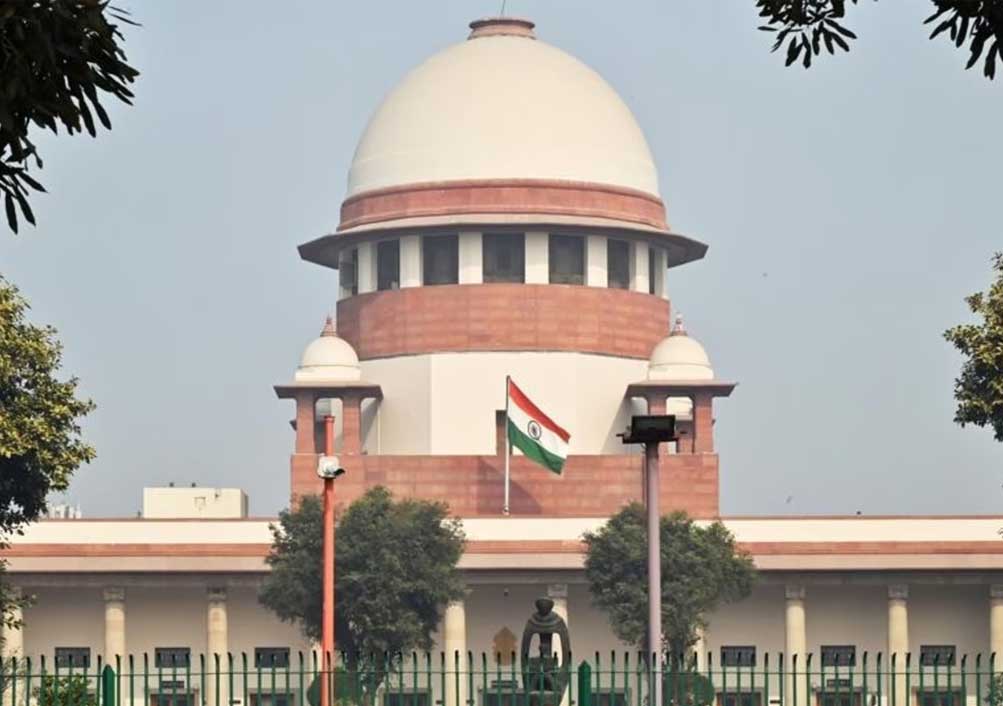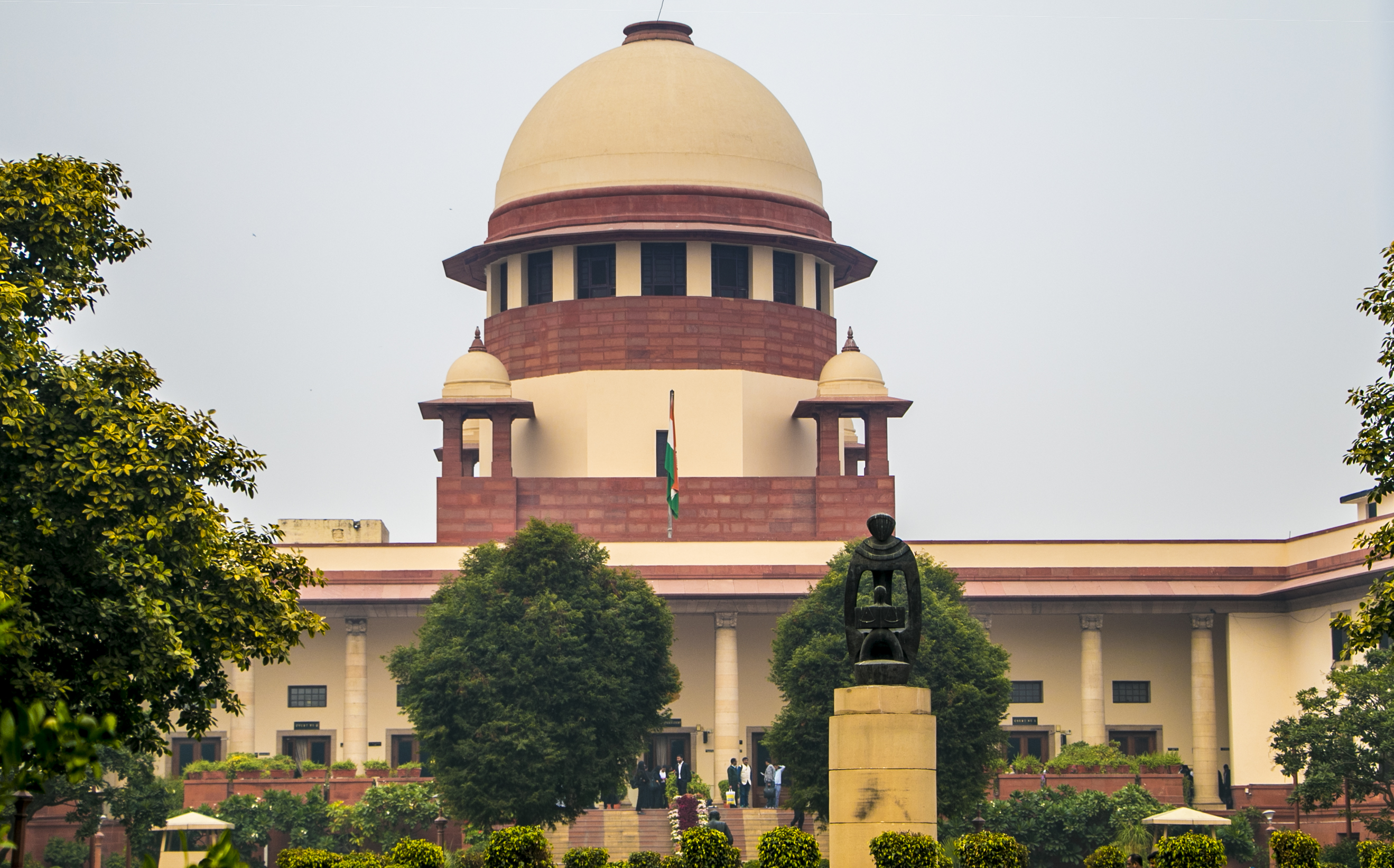Omission to seek ballistic opinion & examine ballistic expert may be fatal to prosecution case when evidence doesn’t inspire confidence or suffers from glaring inconsistencies: Top Court
Justices Abhay S. Oka & Ujjal Bhuyan [21-02-2024]

Read Order: RAM SINGH v. THE STATE OF U.P [SC- CRIMINAL APPEAL NO. 206 OF 2024]
LE Correspondent
New Delhi, February 23, 2024: The Supreme Court has acquitted a murder convict in a case where material witnesses had not been examined, evidence of eyewitness was not credible, weapon of offence wasn’t recovered and ballistic opinion was not obtained.
The facts, as emanated from the prosecution case, were such that PW-1 Shri Radhey Lal lodged a first information in the year 1982 stating that he, his brother Desh Raj, his mother Dulli and his neighbours Lala Ram i.e. PW-3 and Man Singh i.e. PW-2 were sitting in the open space of their house and were chatting. The appellant Ram Singh accompanied by one Lala Ram came to his residence in late evening. Lala Ram had instigated Ram Singh by loudly saying that these people were creating disturbances and they had to be killed. Ram Singh fired on the informant but he slipped below the cot. The bullet hit his mother Dulli who died immediately. Informant stated that the incident was seen by his brother Desh Raj and by his neighbours Lala Ram and Man Singh in the light of the lantern. The informant further stated that about one and a half months back, there was a scuffle between his son Baan Singh and the appellant Ram Singh which matter was duly reported to the local police station. Lala Ram and Ram Singh belonged to the same party. Because of this, they came to the door of his residence when on the instigation of Lala Ram, Ram Singh fired a shot due to which his mother Dulli died.
Police investigated the crime and on completion of the investigation submitted chargesheet charging appellant Ram Singh of having committed offence under Sections 301 and 302 of the IPC as well as under Section 307/34 IPC. On the other hand, the co-accused Lala Ram was charged of having committed offence under Section 307/34 IPC.
The Sessions Court convicted the appellant under Section 301 read with Section 302 IPC and also under Section 307 IPC. However, the other accused Lala Ram was given the benefit of doubt and accordingly was acquitted. The trial court convicted the appellant under the aforesaid provisions of IPC and sentenced him accordingly. The co-accused Lala Ram, son of Dhanna Ram Yadav, was acquitted. The appeal filed by the appellant before the High Court was dismissed. Consequently, his conviction and sentence were confirmed. Therefore, the appellant approached the Top Court.
The Division Bench of Justice Abhay S. Oka & Justice Ujjal Bhuyan noted that neither Desh Raj, brother of PW-1 and son of the deceased, who was very much present at the place and time of occurrence was examined by the police nor the other brother Sunder Lal, the scribe, who had written the first information, was examined by the police. Omission to examine Desh Raj by the prosecution was most crucial as according to the prosecution version he was very much present when the incident occurred.
Finding the behaviour of Sunder Lal to be very unusual as he did not accompany PW-1 to the police station, the Bench noted that there was also no evidence that he had rushed to the place of occurrence where his mother was killed. An adverse inference was drawn against the prosecution for not examining material witnesses. Moreover, it was only PW-1 and PW-2 who had stated that Ram Singh had fired from a country made pistol at PW-1 but the bullet had hit mother of PW-1, who died of the bullet wound. On the other hand, PW-3 categorically stated that he did not see accused Ram Singh carrying any country made pistol. Further, it had come on record that there was previous enmity between PW-1 and the accused relating to election of village Pradhan because of which there were cross cases between them.
It was also brough to light that the country made pistol used by the accused in the offence, could not be recovered by the police and therefore not exhibited. Thus, the main material evidence i.e., the weapon of offence was not exhibited. Also, as per the version of PW-4, the blood stained clothes of the deceased which were seized were sent to the chemical examiner but the report from the chemical examiner was not received till the date and time of his deposition.
“From the above, it is evident that there are glaring inconsistencies in the prosecution version which have been magnified by the absence of the testimony of the material witnesses and the ballistic report coupled with the non-recovery of the weapon of crime”, the Bench held.
Reference was also made to the judgments in Gurucharan Singh Vs. State of Punjab, [LQ/SC/1962/266]; Sukhwant Singh Vs. State of Punjab, [LQ/SC/1995/440]; State of Punjab Vs. Jugraj Singh [LQ/SC/2002/228]; Gulab Vs. State of U.P; Pritinder Singh Vs. State of Punjab, [LQ/SC/2023/733].
The Bench further asserted, “Thus, what can be deduced from the above is that by itself non-recovery of the weapon of crime would not be fatal to the prosecution case. When there is such non-recovery, there would be no question of linking the empty cartridges and pellets seized during investigation with the weapon allegedly used in the crime. Obtaining of ballistic report and examination of the ballistic expert is again not an inflexible rule. It is not that in each and every case where the death of the victim is due to gunshot injury that opinion of the ballistic expert should be obtained and the expert be examined. When there is direct eye witness account which is found to be credible, omission to obtain ballistic report and nonexamination of ballistic expert may not be fatal to the prosecution case but if the evidence tendered including that of eyewitnesses do not inspire confidence or suffer from glaring inconsistencies coupled with omission to examine material witnesses, the omission to seek ballistic opinion and examination of the ballistic expert may be fatal to the prosecution case.”
Considering the factual and legal aspects, the Bench opined that the evidence tendered by the eyewitnesses suffered from serious lacunae and their evidence couldn’t be said to be credible. That apart, material witnesses had not been examined. As per the Bench, the evidence tendered on behalf of the prosecution couldn’t be said to be full proof so much so that non-recovery of the weapon of offence, non-obtaining of ballistic opinion and nonexamination of ballistic expert would be immaterial.
“In such circumstances, it cannot be said that the prosecution could prove the accusation against the appellant beyond all reasonable doubt. As a matter of fact, on the same set of evidence, the trial court gave the benefit of doubt to the other accused Lala Ram primarily on the ground that there was a grudge between the accused and PW-1”, it added.
The Top Court was of the view that the appellant should be given the benefit of doubt as the prosecution could not prove his guilt beyond all reasonable doubt. Any lingering doubt about the involvement of an accused in the crime he is accused of committing, must weigh on the mind of the court and in such a situation, the benefit of doubt must be given to the accused. This is more so when the co-accused is acquitted by the trial court on the same set of evidence, the Bench said.
Thus, the Apex Court set aside the conviction and sentence of the accused and directed him to be released from jail forthwith.
Sign up for our weekly newsletter to stay up to date on our product, events featured blog, special offer and all of the exciting things that take place here at Legitquest.




Add a Comment